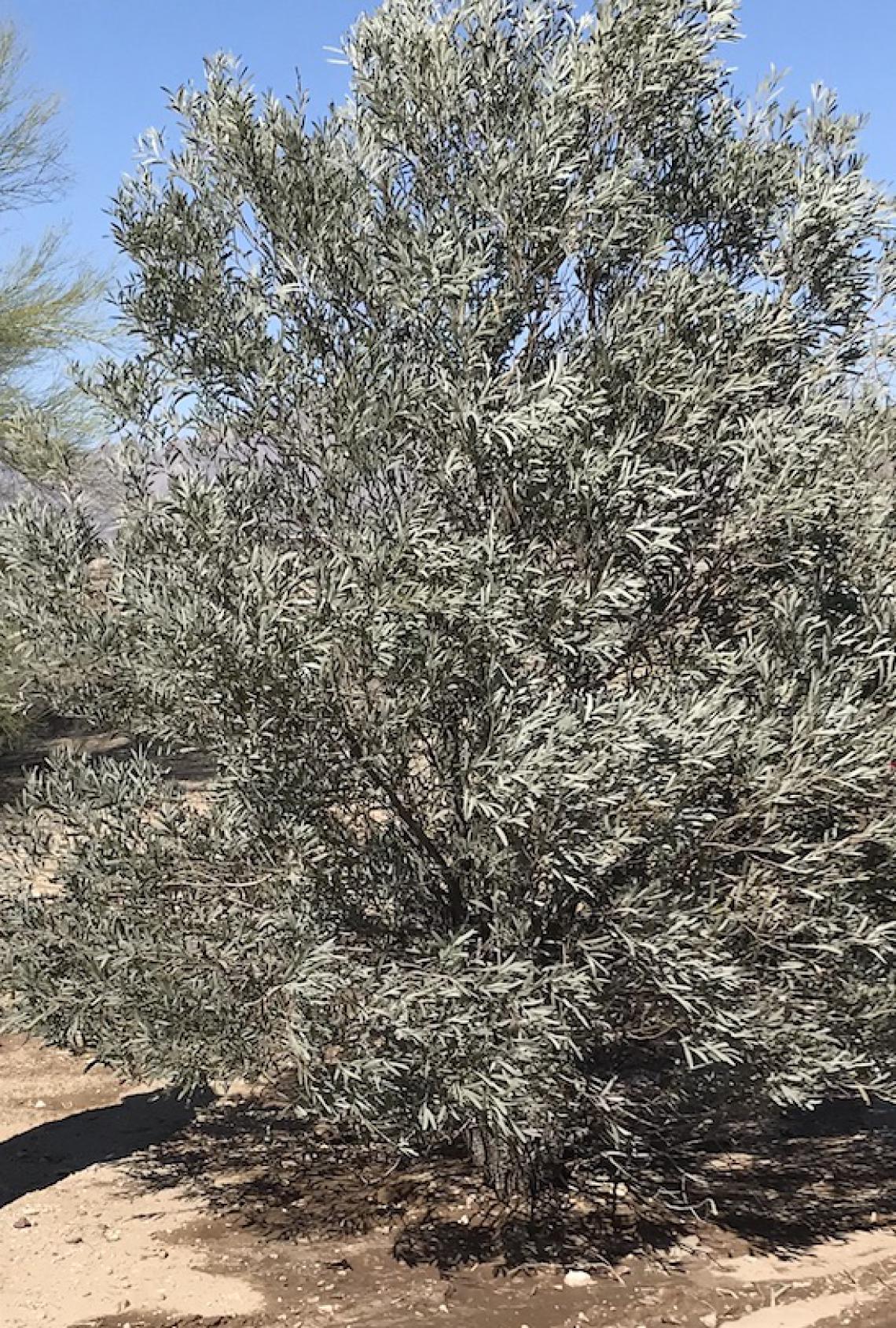Legume Clades
Cultivation Status in AZ
Uniquely cultivated by DELEP
Description
Evergreen, unarmed trees reaching 15--40 ft (4.5--12 m) high with a rounded or irregular canopy. The brownish bark becomes deeply furrowed with age. Phyllodes (leaves) are silvery gray, lance-shaped, and are 1.5--5.5 in (3.7--14 cm) long. Flowers are yellow in small, spherical heads. Flowering is sporadic from autumn into spring.
Habitat
Widespread in central and eastern Australia. This species has a wide ecological tolerance and is found in desert, scrubland, and woodland habitats. In wetter habitats stinking wattle can form extensive woodlands.
Uses
The hard wood of this tree is used for turnery, fence posts, and as fuelwood in Australia. The common name “stinking wattle” is derived from the odor of the leaves under moist conditions.
Horticulture
Stinking wattle grows rather slowly but can growth rate can be increased with supplemental irrigation. The plants require little pruning and develop a tree form with age. Cultivated plants in Tucson have survived -18° F (-7.7° C) with no damage. No problems with pests or diseases have been observed. The trees withstand high winds without stem breakage. Old phyllodes are gradually shed but produce minimal litter. Established trees will survive extended periods of drought with no adverse effects on health or appearance. The dense, evergreen, silvery gray foliage is attractive as are the trunks of larger plants. This is a tough, long-lived, desert-adapted tree that would make an excellent shade tree or specimen tree in hot, dry climates. It is not currently grown by landscape plant nurseries in the U.S.

